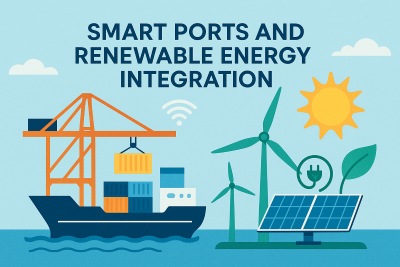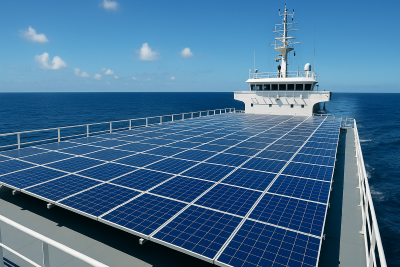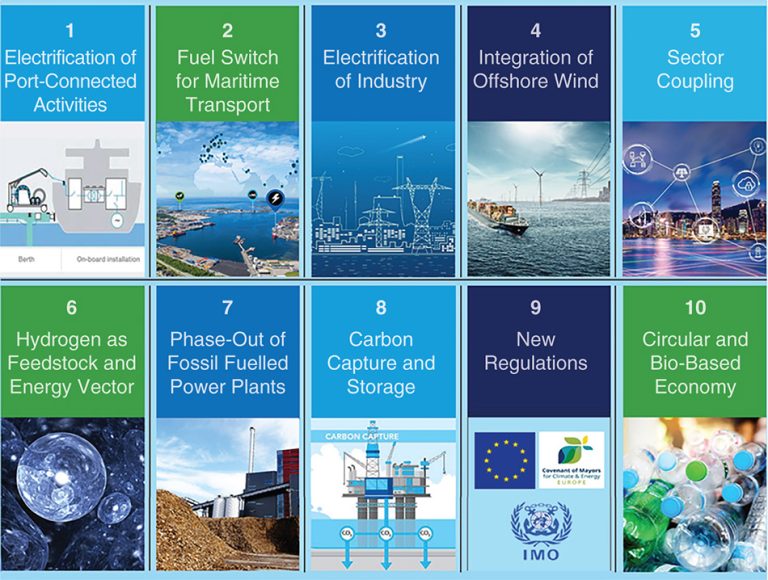What Is Green Shipping and Why It Matters
In a time when climate change stories dominate headlines and carbon emissions continue to surge, the maritime sector finds itself at a pivotal crossroads. On the one hand, global commerce is heavily reliant on shipping; on the other hand, this very mode of transportation is responsible for nearly 3% of worldwide greenhouse gas emissions. Against this backdrop, green shipping emerges as a revolutionary initiative aimed at making maritime transport more eco-friendly. So then, what exactly does green shipping entail, and more importantly, why should it matter to those outside the shipping industry? To answer that, let’s explore further.
What Is Green Shipping?
Green shipping encompasses the implementation of eco-friendly practices, technologies, and policies within maritime transport. At its core, the aim is both straightforward and ambitious: to significantly reduce the environmental impact of shipping, all while preserving operational efficiency and economic viability. In other words, the goal is to strike a balance between sustainability and profitability—two objectives that are not mutually exclusive.
This concept includes a diverse range of innovations and strategies, such as:
- Alternative fuels like biofuels, LNG (liquefied natural gas), hydrogen, and ammonia
- Integration of renewable energy through wind-assisted propulsion and solar panels
- Technologies for reducing emissions, including exhaust scrubbers and carbon capture systems
- Energy-efficient ship designs featuring hydrodynamic hulls and sophisticated propellers
- Digital optimization techniques, such as route planning and speed adjustments to minimize fuel consumption
Collectively, these efforts seek to decrease greenhouse gas (GHG) emissions, air pollutants (such as NOx and SOx), and ocean pollution from spills or waste disposal.
Why Green Shipping Matters
-
The Climate Emergency Is Urgent
One of the most persuasive reasons to advocate for green shipping is its potential to lessen the shipping sector’s role in global warming. The International Maritime Organization (IMO) warns that, if left unchecked, shipping emissions could rise by a staggering 50% to 250% by 2050. However, green shipping initiatives present a promising alternative that can dramatically shift this trajectory. By comparison, these sustainable strategies not only curb emissions but also actively contribute to the global effort to combat climate change. As a result, they play a vital role in helping the maritime sector align with the Paris Agreement objectives.
-
Ocean Ecosystems Are at Risk
Traditional shipping methods frequently involve discharging ballast water, bilge water, and other contaminants that disrupt marine life. Green shipping promotes the use of wastewater treatment systems, zero-discharge policies, and environmentally safe antifouling coatings to safeguard ocean biodiversity.
-
Regulatory Demands Are Increasing
Governments and international organizations are tightening regulations. From the IMO’s 2020 sulfur cap to the impending carbon intensity indicators (CII), shipowners are under increasing pressure to comply. Green shipping allows companies to stay ahead of regulatory requirements, avoid penalties, and retain access to global ports.
-
Consumers and Investors Are Paying Attention
Sustainability has transitioned from a niche issue to a mainstream demand. Shippers, retailers, and end consumers are increasingly drawn to environmentally conscious companies. Green shipping bolsters corporate image, attracts investors focused on ESG criteria, and can even sway purchasing decisions within supply chains.
Key Components of Green Shipping
To fully appreciate why green shipping is such a transformative approach, it’s essential to understand its foundational elements.
Alternative Fuels
Conventional vessels operate on heavy fuel oil, which is a carbon-heavy and polluting resource. Green shipping champions cleaner alternatives such as:
- Biofuels – Sourced from biological materials, they help to decrease net CO₂ emissions.
- LNG – A transitional energy source that reduces sulfur and nitrogen oxide emissions.
- Hydrogen and Ammonia – Emission-free fuels with significant potential for the future.
- Methanol – An increasingly favored lower-emission alternative for retrofitting.
Integration of Renewable Energy
Meanwhile, contemporary vessels are increasingly incorporating innovative solutions such as solar panels and wind-assisted propulsion technologies, including rotor sails and kites. In addition, these systems are being adopted not just as experimental add-ons, but as integral components of a broader strategy to cut emissions and reduce fuel consumption. As such, the shift toward renewable energy sources at sea is gaining real momentum.. These innovations support conventional engines, leading to decreased fuel consumption and emissions.
Advancements in Hull and Propulsion
Eco-friendly shipping prioritizes effective ship design.
When it comes to vessel design, elements such as bulbous bows, air lubrication systems, and optimized propellers are critical. These features work synergistically to minimize hydrodynamic drag, thereby improving overall fuel efficiency. Moreover, by adopting slow steaming — that is, operating vessels at reduced speeds — operators can further enhance emission reduction efforts. Together, these innovations offer a multi-layered approach to sustainability at sea.
Smart Shipping and Digital Enhancements
Digital technologies are vital to sustainable shipping. Sophisticated software can identify the most fuel-efficient routes, track real-time energy usage, and anticipate maintenance needs to avert breakdowns and inefficiencies.
Leading Companies in Green Shipping
Numerous maritime organizations are establishing the standard:
- Maersk has committed to methanol-powered ships and aims for net-zero by 2040.
- Wallenius Wilhelmsen is actively investigating innovative solutions, specifically wind-powered cargo vessels such as the Orcelle Wind. In doing so, the company is not only embracing sustainable technology but is also positioning itself at the forefront of green shipping advancements.
- NYK Line has tested fuel cells and battery-operated ships in Japan.
These trailblazers illustrate that sustainability and profitability can coexist, motivating others within the sector to follow their example.
Obstacles in the Path of Green Shipping
Despite the optimism, the transition is not without challenges.
-
High Costs and Insufficient Infrastructure
Alternative fuels and novel propulsion systems frequently necessitate expensive retrofits and supporting infrastructure. Many ports lack the facilities for LNG or hydrogen bunkering.
-
Availability and Compatibility of Fuels
Certain green fuels are not yet commercially viable or broadly accessible. Concerns about compatibility with current engines and safety protocols persist.
-
Regulatory Ambiguity
Although regulations are becoming increasingly stringent, the lack of uniformity across international jurisdictions poses a significant challenge. Consequently, the absence of global consistency can cause confusion among stakeholders and ultimately hinder the widespread adoption of eco-friendly practices. Therefore, it is essential that efforts toward regulatory harmonization continue to be prioritized.
The Path Ahead: Collaboration Is Crucial
To address these challenges, collaboration is vital. Shipowners, port authorities, fuel providers, governments, and international regulators must coordinate efforts. Incentives, subsidies, and public-private partnerships can expedite research, infrastructure growth, and fleet modernization.
Consumers also have a part to play. By supporting companies that emphasize sustainable shipping and demanding transparency in supply chains, individuals can encourage the market to adopt greener practices.
Conclusion: A Future of Sustainable Shipping
Green shipping transcends being a mere trend—it serves as a framework for a more sustainable and responsible maritime sector. As global trade continues to expand, the urgency for environmentally friendly shipping practices becomes increasingly critical. Adopting green technologies, fuels, and designs is no longer optional; it is imperative for the health of our planet, oceans, and the generations to come.
As the movement toward sustainability gains momentum, one fact is evident: green shipping is not solely about vessels—it is about responsible stewardship.




